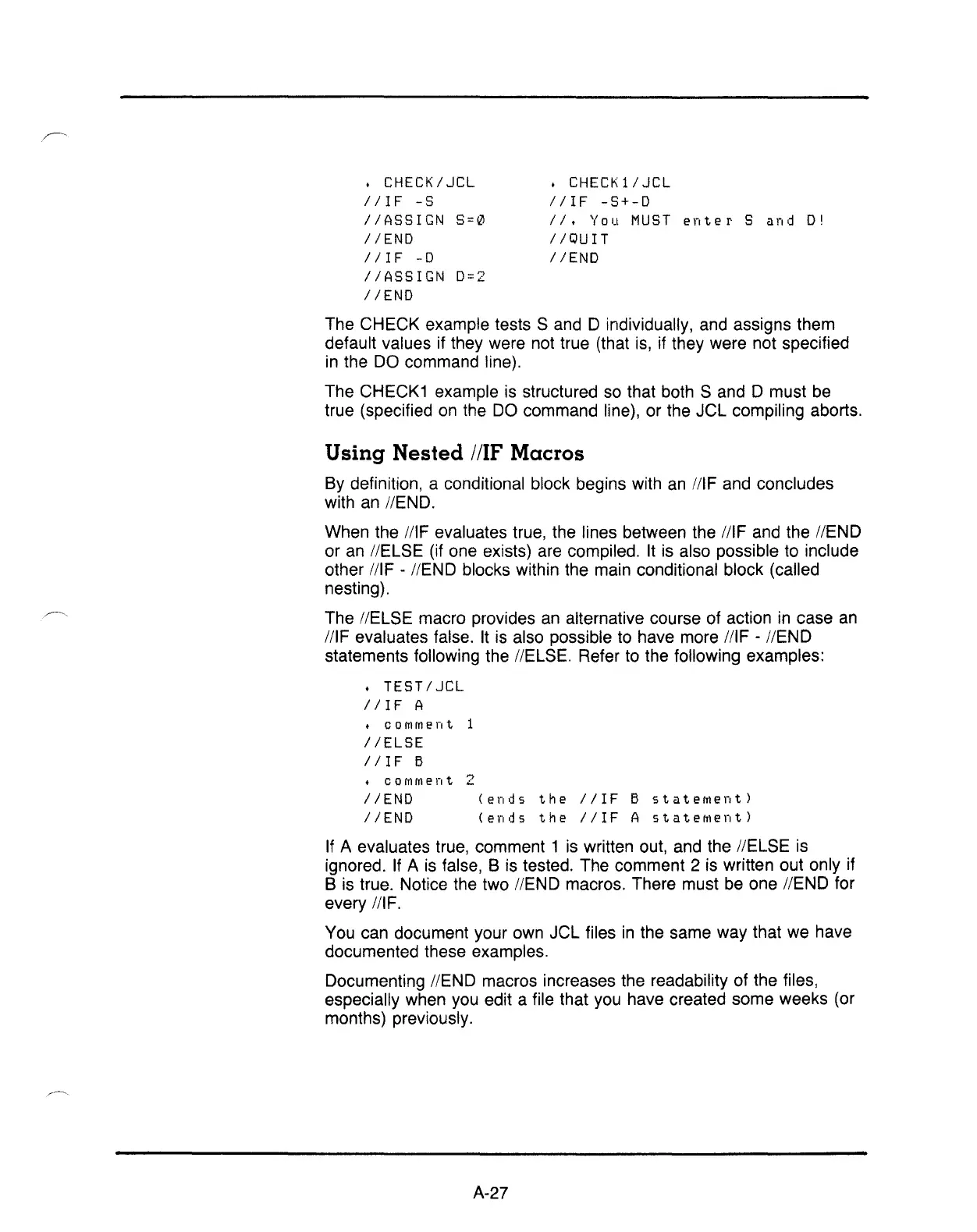• CHECK1/JCL
IIIF
-5+-D
II.
You
MUST
enter
Sand
D!
I I
QU
IT
IIEND
• CHECK/JCL
I/IF
-5
IIA55IGN
5=0
IIEND
I/IF
-D
IIA55IGN
D=2
IIEND
The CHECK example tests
Sand
0 individually, and assigns them
default values if they were not true (that
is,
if they were not specified
in
the
DO
command line).
The CHECK1 example
is
structured
so
that both
Sand
0 must
be
true (specified
on
the
DO
command line), or the JCL compiling aborts.
Using
Nested
//IF Macros
By definition, a conditional block begins with
an
IIIF and concludes
with
an
IIEND.
When the IIIF evaluates true, the lines between the IIIF and the IIEND
or
an
IIELSE (if one exists) are compiled.
It
is also possible to include
other
IIIF - IIEND blocks within the main conditional block (called
nesting).
The IIELSE macro provides
an
alternative course of action
in
case
an
IIIF evaluates false.
It
is
also possible to have more IIIF - IIEND
statements following the IIELSE. Refer
to
the following examples:
• TEST/JCL
IIIF
A
•
COfTlfTlent
IIELSE
II
IF
B
•
COITlfTlent
2
IIEND
IIEND
(ends
the
IIIF
B
stateMent)
(ends
the
IIIF
A
stateMent)
If
A evaluates true, comment 1
is
written out, and the IIELSE
is
ignored.
If
A
is
false, B is tested. The comment 2 is written out only if
B is true. Notice the two
IIEND macros. There must
be
one IIEND for
every
IIIF.
You can document your own JCL files
in
the same way that we have
documented these examples.
Documenting
IIEND macros increases the readability of the files,
especially when you edit a file that
you
have created some weeks (or
months) previously.
A-27

